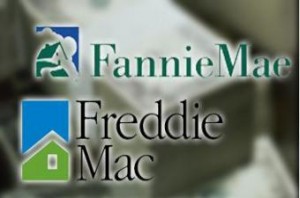 The Fannie Mae and Freddie Mac reform has been talked about in the industry since they were placed under conservatorship eight years ago after a massive taxpayer-funded bailout.
The Fannie Mae and Freddie Mac reform has been talked about in the industry since they were placed under conservatorship eight years ago after a massive taxpayer-funded bailout.
In a recent essay published by the Urban Institute, former Vice Chairman and CFO of Fannie Mae, Tim Howard, explains that the GSE reform should be based on "fixing what works" in order to avoid yet another crisis.
"Serious proposals for housing finance reform must have clearly defined objectives against which they can be evaluated, and must be derived from a clear-eyed analysis of the causes of the previous crisis so that by addressing and fixing those causes we minimize the chance of a similar crisis happening again," Howard wrote.
"When invented narrative is replaced with verifiable fact, Fannie and Freddie cease to be a "failed business model" which must be wound down and replaced; they instead become valuable resources that must be built upon and improved." -Tim Howard
Howard's proposed reform plan aims to create a capital markets-based secondary market mechanism that will be capable of financing at least $1 trillion of 30-year fixed-rate mortgages each year at an affordable rate for homebuyers with an agreed-upon standard of taxpayer protection.
"The emphasis on homebuyer cost is deliberate," Howard noted. "Low-, moderate-, and medium-income homebuyers suffered the most during the 2008 crisis and received no significant relief from the government. These same families have seen little growth in their incomes during the recovery, so it should be a policy priority to provide them with the greatest possible access to mortgage credit at the lowest possible cost."
Howard's 5 Ways to Approach to GSE Reform:
1. Relationship with the government
Experts generally agree that the role of the government in the charters of Fannie and Freddie is too ambiguous, and that the balance of benefits tilts too far in the direction of the companies. Moving to a “utility model,” with limited returns and a more focused business purpose, addresses both issues. In the model I propose, Fannie and Freddie would remain shareholder-owned but would agree to accept (1) a cap on the average return they could target in their guaranty fee pricing (I suggest 10 percent after-tax), (2) restrictions on the size and use of their portfolios (limited to 10 percent of outstanding credit guarantees and to purposes ancillary to the guaranty business), and (3) standards for minimum and risk-based capital determined by administration policymakers with percentages set and imposed by FHFA. In an “exchange for consideration,” the government would commit to provide temporary support to the companies should their capital ever prove insufficient (which by design would be highly unlikely).
2. Capital
There is a proven way to set capital standards for a company that deals in a single, homogenous asset type: require that company to hold enough capital to withstand a defined, worst-case stress scenario. In my proposal, administration policymakers would pick that scenario. I recommend that they require Fannie and Freddie to hold sufficient capital to survive a 25 percent nationwide decline in home prices over five years. Even though such a price decline did happen between 2006 and 2011, both major factors that precipitated it—very risky mortgage types like no-documentation loans or interest-only ARMs with teaser rates now prohibited by the Consumer Financial Protection Bureau (CFPB) and the dominance of a financing method, private-label securitization, that placed few limits on the risks of the mortgages it accepted—will be absent in the future, making the chance of a repeat of the previous episode vanishingly small.
3. Regulation
After a stress standard for the companies has been chosen, FHFA will need to analyze Fannie and Freddie’s credit performance during the prior housing market collapse to determine the percentage of minimum capital—for the types and characteristics of loans the companies are permitted to acquire today—that would allow them to comfortably withstand that stress. FHFA would use that same data to determine the stress capital percentages by product type and risk category used to calculate required risk-based capital.
4. Affordable Housing
Fannie and Freddie’s role in supporting affordable housing is limited by the fact that they only can purchase or guarantee the loans lenders originate. Despite this, FHFA should set affordable housing goals for the companies. FHFA also should have the power to impose penalties for failing to meet those goals, but only if the percentage of affordable business Fannie or Freddie does fall short of the percentage originated by lenders that year.
5. Implementation
The above changes could be effectuated through administrative action, as were the 2008 Preferred Stock Purchase Agreement and its amendments. With the written consent of the boards of directors of Fannie and Freddie, FHFA as conservator would make binding commitments on behalf of the companies, and Treasury and FHFA would make binding commitments on behalf of the government.
Click here to view the full essay.

 theMReport.com Your trusted source for mortgage banking news
theMReport.com Your trusted source for mortgage banking news








